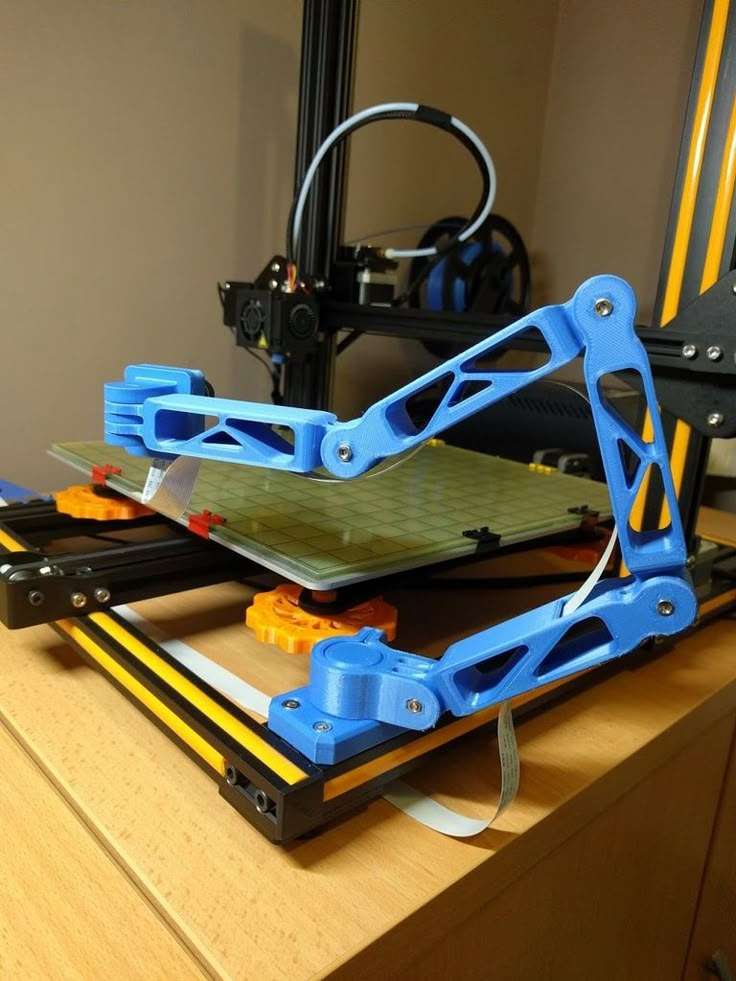Cool 3d printing stuff
15 Cool Things to 3D Print
Published on June 17, 2022 by Aysha M.
You know that we love to share STL files and ideas for you to print with your desktop 3D printer. Though many center on certain topics, like holidays or themes, this time we wanted to share with you some of the cool things to 3D print that we found for 2022. From useful tools to help you in your everyday life to incredible décor to fun projects for all geeks in your life, we have something for everyone. Check out our list below, divided into three categories (useful, decor, geek), and let us know what you think! Do note that in each description with you will the link to download the mostly STL files, both free and paid. Have fun and happy printing!
Useful Things
The 3D Printed Water Bottle Opener
I’m sure we all know the feeling. It’s a hot summer day and you just want a sip of water to relieve your parched throat, but the lid is screwed on too tight. However, with this next 3D printed gadget, you will no longer have to worry! This free STL file on Thingiverse from Terence Ang will allow you to unscrew even the hardest bottle caps thanks to its easy to hold shape and grippy edges. You can download it HERE.
A Q-Tip Dispenser
Another useful object that you can’t miss on our list of cool things to 3D print is this Q-Tip dispenser. Now, with your 3D printer you can create this simple dispenser which can be installed on any sink. Its square shape is designed to be able to push the supply of cotton swabs through the upper opening and, as one is taken, the others come down, ready to be used. It also has a lid on the top to cover part of the dispenser and give a more aesthetic touch. If you want to make your own dispenser box, you can download the STL file from Thingiverse HERE.
A Cool Spaghetti Measurer Made With 3D Printing
Has it ever happened to you that you wanted to prepare spaghetti for one person and you go overboard with the quantity? Don’t worry, it happens to all of us. However, today we bring you the solution to the problem, with nothing more and nothing less than… a spaghetti measurer! Thanks to its design with various circumferences of different sizes, this object will allow you to measure the ideal portion of spaghetti according to the number of people who are going to eat it . If you have a 3D printer, you can now make this kitchen tool easily and simply. You can find the 3D file on the Thingiverse website HERE.
If you have a 3D printer, you can now make this kitchen tool easily and simply. You can find the 3D file on the Thingiverse website HERE.
A 3D Printed Laptop Stand
If you telecommute or spend time at home with a computer, you probably need a laptop stand. Laptop stands are accessories designed for two main functions: to place the computer in a more ergonomic position and to promote ventilation, a necessity when you start to feel your laptop’s fan overworking itself. There is a wide range of stands that fit any equipment: cooled bases, lecterns, fixed or height-adjustable, among other models. In recent years, the design and efficiency of laptop stands has improved enormously. HERE you can download an STL file which you can use to print your your very own computer stand.
Have A Better Snack with the Baby Yoda Cookie Holder
For the next useful tool on our list of cool things to 3D print, we bring you a tool that will turn snack time from ordinary to extraordinary.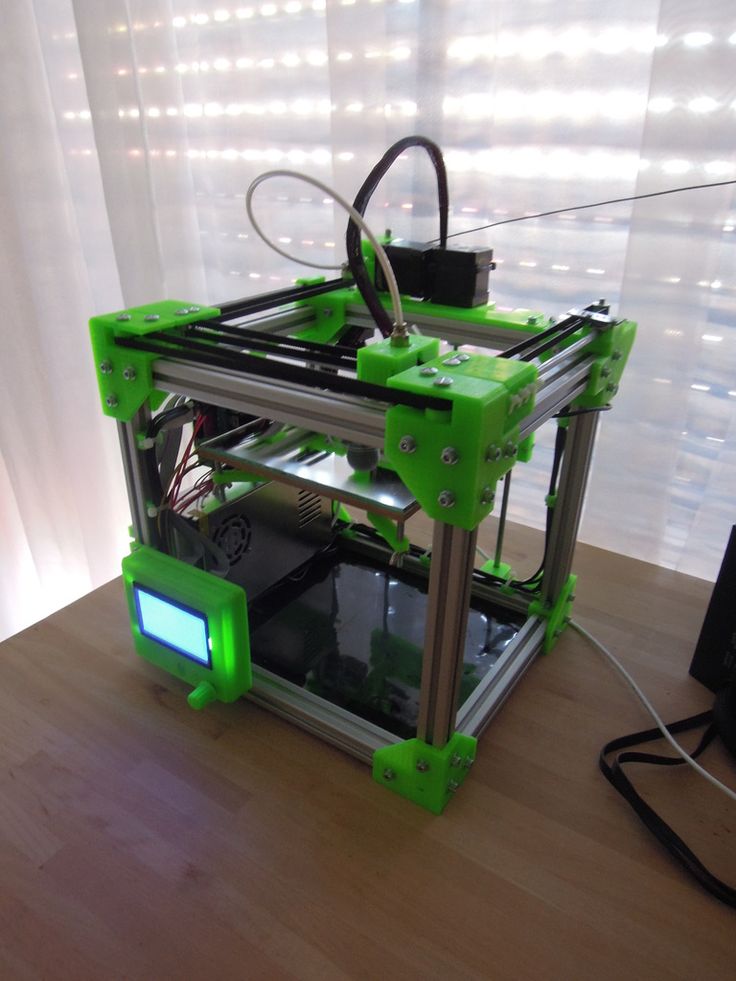 Who doesn’t know the famous Yoda from the Star Wars saga? Well this time this model is of Baby Yoda, or Grogu, the fan-favorite character of the Disney + The Mandalorian. The model is the perfect to put your favorite cookies before dipping them in milk. It is an easy to print piece, and can be printed in any size to fit the cookie you want. Of course, they recommend supports for the handle and base. Knowing you can can print your own very own Baby Yoda in resin, what are you waiting for? Download the STL file HERE.
Who doesn’t know the famous Yoda from the Star Wars saga? Well this time this model is of Baby Yoda, or Grogu, the fan-favorite character of the Disney + The Mandalorian. The model is the perfect to put your favorite cookies before dipping them in milk. It is an easy to print piece, and can be printed in any size to fit the cookie you want. Of course, they recommend supports for the handle and base. Knowing you can can print your own very own Baby Yoda in resin, what are you waiting for? Download the STL file HERE.
Cool Thing to 3D Print: A Baby Yoda Cookie Holder
Cool Decor to Print
The Industrial MONSTERA POT
The Monstera pot is the perfect solution if you are looking for a unique and personalized flower pot. 3D printed, it has a striking design and is much lighter than traditional flower pots. The Monstera can be designed without a support structure and has a square shape, so it can also be used by people looking for a pot with unusual dimensions. As its name suggests, it can obviously be used to plant monsteras, a popular, distinctive looking house plant.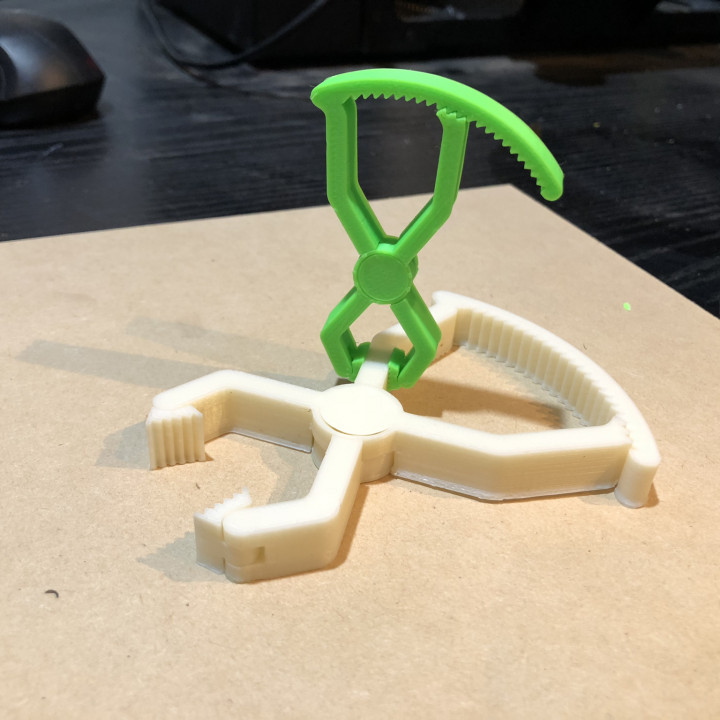 Find the model HERE.
Find the model HERE.
A Cool Minecraft Lamp You Can 3D Print
Here is the perfect decor for fans of Minecraft! On Thingiverse, the maker Iron_Harrier offers a lamp that is inspired by the famous video game. Composed of 4 different shades of gray, the lamp has 5 sides which must be printed separately and then assembled. The designer specifies however that they should not be glued to the base of the lamp. A Philips smart bulb multicolor is used as a light source. you can find the 3D model HERE!
A Distinctive and Fun 3D Printed Birdhouse
As summer is upon us, why not 3D print a little birdhouse to welcome your local feathered friends? That’s what designer PA1 is offering on the Cults website. The house in question is “tooned,” or made to look like a cartoon for all of you out there who are young or at least young at heart.To ensure that no mistakes are made during the printing process, the maker has also added various instructions on the marketplace to follow. For example, he explains that large parts can be made with a layer height of 0.3 to speed up the printing time and that there is no need to move the parts, they are all already placed in the right orientation. Finally, if this one is not to your taste, PA1 also offers two other models of birdhouses to be 3D printed! You can find the model HERE.
For example, he explains that large parts can be made with a layer height of 0.3 to speed up the printing time and that there is no need to move the parts, they are all already placed in the right orientation. Finally, if this one is not to your taste, PA1 also offers two other models of birdhouses to be 3D printed! You can find the model HERE.
A 3D Printed Dragon Egg
If you are passionate about all things fantasy, then this application will definitely please you! For the next on our cool things to 3D print list, we turn to maker DoritoMojito who, on the Thingiverse website, has made an STL file available which would allow you to 3D print your very own dragon egg. Available in three colors, blue, purple and green, it is possible to print the dragon egg from a 3D resin printer and using FDM machines. The designer says he used the 3D printer Photon from Anycubic. Modeled on Blender software, the dragon egg is the perfect application to decorate your home or to offer a gift to a fan of the famous Game of Thrones series.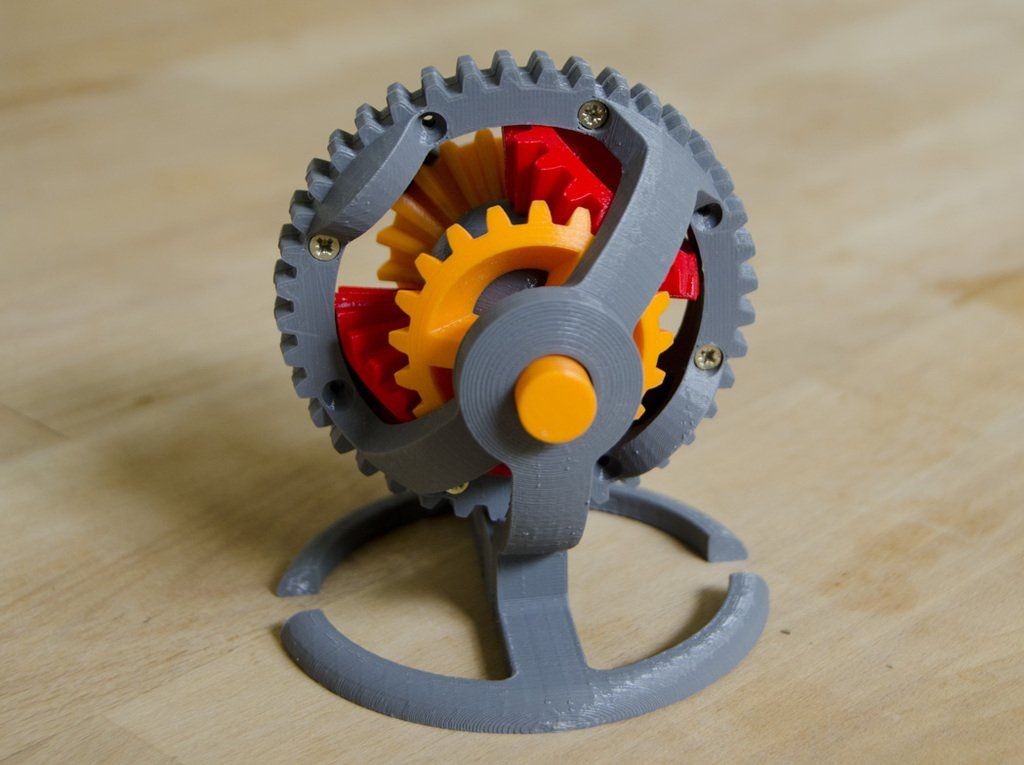 Do note, that thankfully no baby dragons will be harmed in the 3D printing process. You can find the model HERE.
Do note, that thankfully no baby dragons will be harmed in the 3D printing process. You can find the model HERE.
Miss Pac-Man Lamp
With the next offering on our list of cool things to 3D print, let’s take a trip next to our childhood, when we spent hours playing the classic arcade game Pac-Man. Now, you can re-experience the same joy with this Miss Pac-Man lamp that you can place in your home! Easy to 3D print and wire with LED ribbon, this lamp not only looks cool, but is sure to be a real head turner…. For the 3D printing of this file, the user needs white, red, black and blue filament colored filament in addition to the world-famous Pac-Man yellow, so that Miss Pac-Man can shine in all her glory. You can download the file HERE for about $3 on Cults3D.
3D Printed Things for Geeks
SU-33 Flanker-D Kit Card
This kit card of a Su-33 Flanker-D not only provides a lot of fun during 3D printing, but also during the subsequent assembly of the plane. For those who are perhaps unfamiliar, the Sukhoi Su-27K, which is apparently now known as the Su-33, NATO reporting name: Flanker-D, is a Su-27 modified for carrier-based operations was modified for carrier-based missions. According to the creator of the kit, PhabulousPhantom, it differs from the SU-27 as it has a strengthened airframe, an arrestor hook, folding wings and stabilizers. Now, if you also want to 3D print this plane, then you don’t need any support structures for this. Gray PLA is specified as the material to be used, and you should print with a layer height of 0.2 mm and a 100% fill. Also, due to the relatively tight fit, the use of adhesive is recommended. The file is available for download HERE.
For those who are perhaps unfamiliar, the Sukhoi Su-27K, which is apparently now known as the Su-33, NATO reporting name: Flanker-D, is a Su-27 modified for carrier-based operations was modified for carrier-based missions. According to the creator of the kit, PhabulousPhantom, it differs from the SU-27 as it has a strengthened airframe, an arrestor hook, folding wings and stabilizers. Now, if you also want to 3D print this plane, then you don’t need any support structures for this. Gray PLA is specified as the material to be used, and you should print with a layer height of 0.2 mm and a 100% fill. Also, due to the relatively tight fit, the use of adhesive is recommended. The file is available for download HERE.
A Tablet holder for Easier Drone Flights
In addition to being interesting to print, this tablet holder can be used in a variety of ways. For example, this piece can make drone flights much easier! Specifically, the tablet holder offers the possibility to attach a drone controller.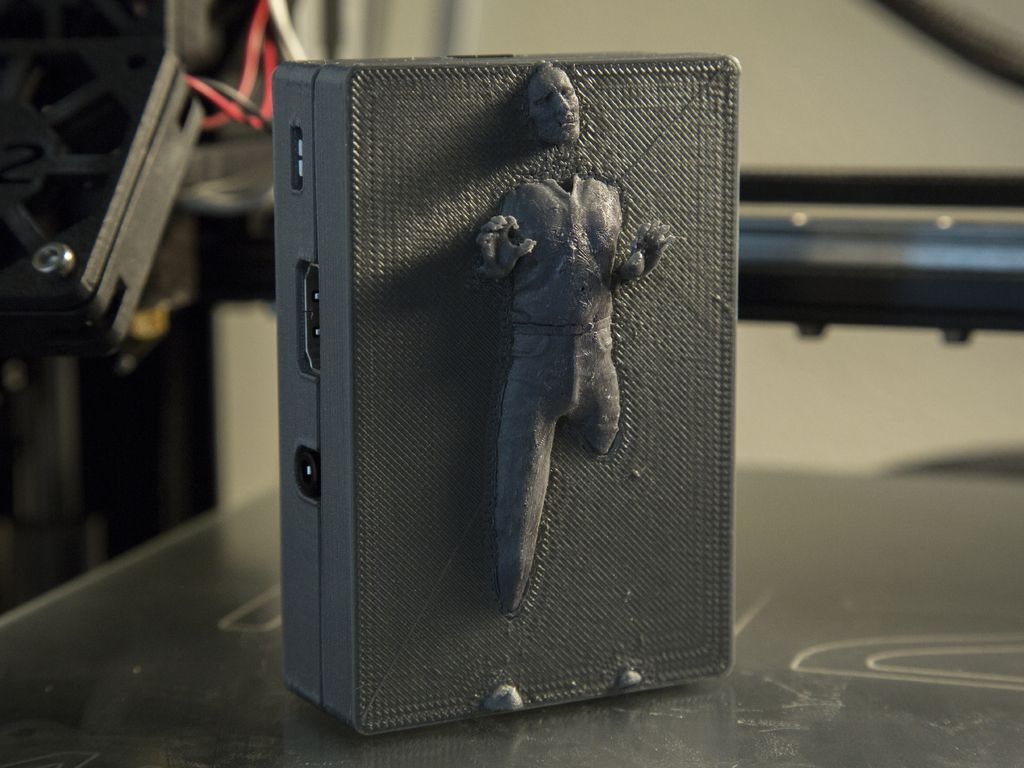 And thanks to this, the drone pilot can fully concentrate on the flight. It is however important to print a solid filling in order to ensure the necessary stability. You can download the file HERE on Thingiverse.
And thanks to this, the drone pilot can fully concentrate on the flight. It is however important to print a solid filling in order to ensure the necessary stability. You can download the file HERE on Thingiverse.
A Super Mario Keychain
Nintendo’s Super Mario games are probably the most popular and well-known video games in the world. For many of us, Super Mario is a sweet reminder of the countless hours of fun we’ve spent playing the adventures of the famous Italian plumber. This simple and easy-to-print keychain is a perfect accessory, which can be carried anywhere and bring back childhood memories every time you take out your key. The main part and individual letters are printed separately and can be easily put together afterward. The simplicity of the keychain makes it especially suitable for 3D printing beginners. You can download the keychain HERE.
A 3D Printed Dungeon for Tabletop Games
Another on the list of the really cool things to print is this 3D printed dungeon.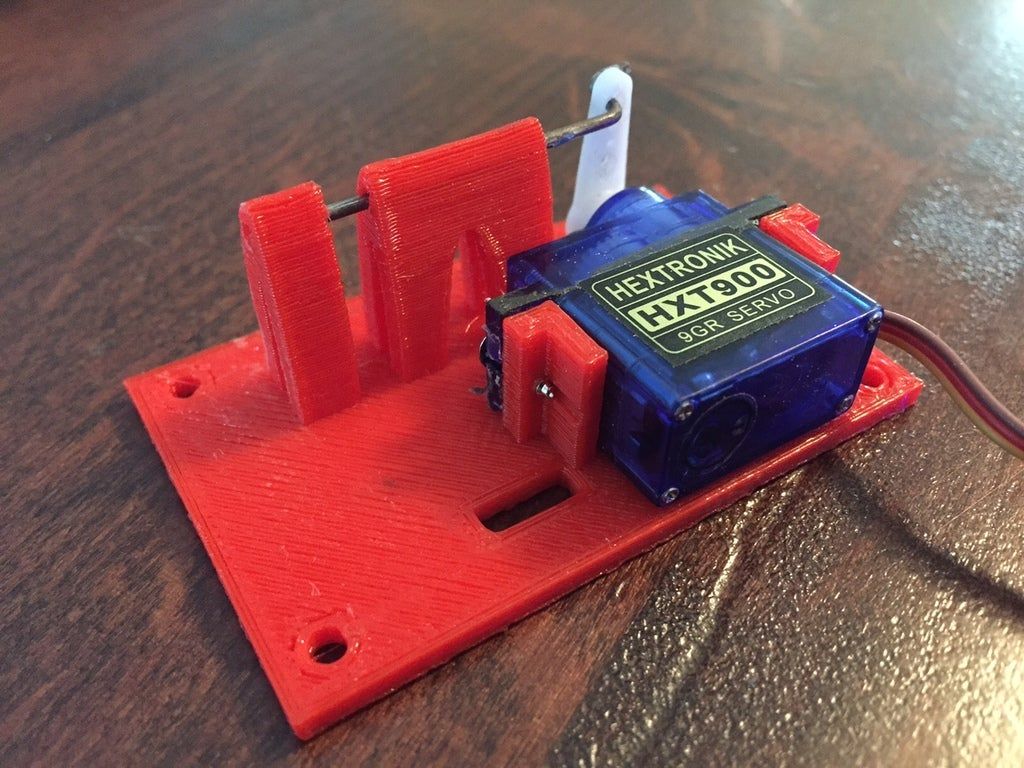 The simple yet stylish parts can be put together in any way desired, providing a perfect board for any dungeon-themed game of your choice. Especially for fans of tabletop RPG games like Dungeons and Dragons, this 3D printed dungeon is a perfect way to give your next game an authentic-looking setting for exciting playing sessions. You can download the dungeon HERE.
The simple yet stylish parts can be put together in any way desired, providing a perfect board for any dungeon-themed game of your choice. Especially for fans of tabletop RPG games like Dungeons and Dragons, this 3D printed dungeon is a perfect way to give your next game an authentic-looking setting for exciting playing sessions. You can download the dungeon HERE.
A 3D Printed Chessboard
Chess is one of the most known and played games in the world. No matter what your age, the strategy board game always manages to fascinate people and is without a doubt one of the best games ever invented. This 3D printed chess set has all you need to start playing the famous game. No matter if you want to play at home, use it to pass the time on a trip, or simply use it to put it on display somewhere, this chess set definitely is a cool thing to print for all chess fans out there. You can download the Chess set HERE.
What do you think about this list of cool things to 3D print? Let us know in a comment below or on our Facebook and Twitter pages! Sign up for our free weekly Newsletter, all the latest news in 3D printing straight to your inbox!
51 Cool Things to 3D Print (2022) – Clever Creations
Image: Marvin via PrusaPrinters
Our site is reader-supported. When you buy via the affiliate links on this site, we will receive a commission at no cost to you. All opinions remain our own. Learn more
When you buy via the affiliate links on this site, we will receive a commission at no cost to you. All opinions remain our own. Learn more
One of the struggles of owning a 3D printer is deciding what cool prints to make next. With so many 3D model sharing websites, there are endless 3D print ideas to try.
In this article, we’ll give you our top picks for the coolest 3D printer projects and show you where you can find the models you need.
Top 3D Printing Projects and Ideas in 2022
Elastic Football
This two-player elastic football game uses rubber bands to make the player pieces flexible in order to manipulate the small ball across the printed field. The sides of the playing field have an abacus-style point counter for both players and a lever to control the goalie piece on the back.
- Designed by: Wilko_SLO
- Where to get: PrusaPrinters
Mechanical Wall Clock
Clocks are fairly complex and cool in general, but 3D printed clocks like this one by Hairald are especially interesting to look at. This design is fully printed and does not use any electronics or batteries.
This design is fully printed and does not use any electronics or batteries.
The mechanism uses a wind-up method with a hand crank and a hanging weight to move the gears using the force of the falling weight. You can watch a video of this particular clock in action here.
- Designed by: Hairald
- Where to get: PrusaPrinters
Squid Game - Front Man Mask
Can’t get enough of Netflix’s Squid Game? Neither could the designer of this front man mask. Print this model for an interesting decor piece to hang on the wall or use it to finish off your best cosplay outfit.
- Designed by: r1nce
- Where to get: PrusaPrinters
Articulating Raspberry Pi Camera Mount
While the best 3D printers come with a built-in camera option for creating time lapse videos and remotely monitoring prints, you can also add this functionality to any 3D printer that does not natively have it.
This articulated camera mount uses a Raspberry Pi controller to bring a fully flexible camera option for remote viewing, time lapse recording, or taking stills of your prints as they are in progress.
- Designed by: Sneaks
- Where to get: PrusaPrinters
Original Simpsons TV
Keep a little ode to the Simpson’s on your shelf or desk with this miniature recreation of the original TV set from the show.
This design uses a Raspberry Pi and other inexpensive components to create a working miniature television screen that plays videos on loop.
- Designed by: buba447
- Where to get: Thingiverse
Charger Cable Organizer
The only thing more annoying than an unorganized wad of chargers and cables is a tangled unorganized wad of chargers and cables. These printable organizers store your chargers when not in use, keeping them tidy and protected from other cords.
They work like small spools, letting you unwind the charger only as far as you need. When you’re done using the cable, you just twist the lid to wind the cord back up.
- Designed by: DFV Tech
- Where to get: PrusaPrinters
Screw Measuring Tool
Nothing slows you down more than a container full of mixed-together mystery screws and bolts.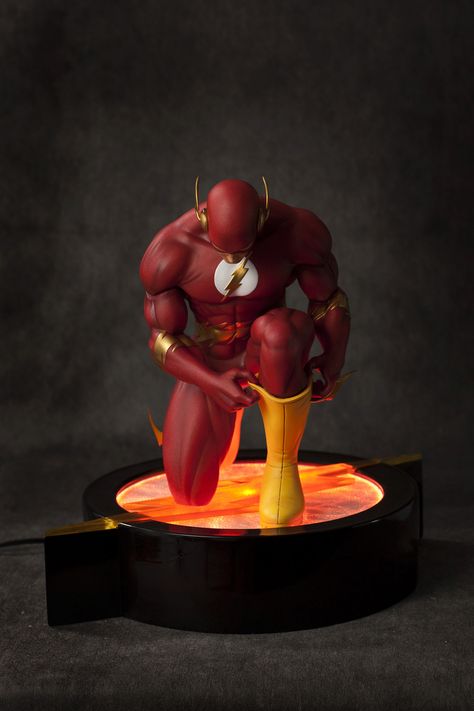 This screw measure tool is easy to print and has all the most common bolt and screw sizes to help you quickly identify the size and type of errant bolts, screws, or nuts.
This screw measure tool is easy to print and has all the most common bolt and screw sizes to help you quickly identify the size and type of errant bolts, screws, or nuts.
- Designed by: MattG
- Where to get: PrusaPrinters
Rugged Desktop Organizer
Keep your desk tidy and your office supplies close at hand with this multipurpose desktop organizer. It has built-in slots for your USB sticks, SD and micro SD cards, and compartments for your pens, scissors, and any other tools you use on the regular.
- Designed by: Byzantium3D
- Where to get: Cults
Giroid Vase
Both functional and beautiful, this giroid vase is a fast and easy print project that doesn’t require any supports or serious post-processing work.
If you don’t intend to use it with water (such as when using silk flowers), it’s ready to use right off the build plate. However, if you plan to use it as a traditional vase, it is best to spray it with some sort of sealant to keep the water from leaking through the print layers.
- Designed by: Area3D
- Where to get: Thingiverse
Marble Maze
You’ll need to move the zen garden on your office desk, because this printed marble maze is the clear cure for office boredom. Fully printable (aside from the marble, of course) and easy to assemble, this design uses snap-together ball and socket joints on the parts to avoid glue or other adhesives.
- Designed by: ericman314
- Where to get: PrusaPrinters
Cute Caravan Birdhouse
Camping enthusiasts rejoice: now the wildlife can also enjoy the charm of a vintage camper with these cute caravan birdhouses. You’ll need to 3D print the two colors separately before gluing the 3D prints together for a cute two-toned effect. This build fits on most print bed sizes.
- Designed by: PA1
- Where to get: Cults
Drippy Bucket
Add a little pop art to your work or living space with the drippy bucket.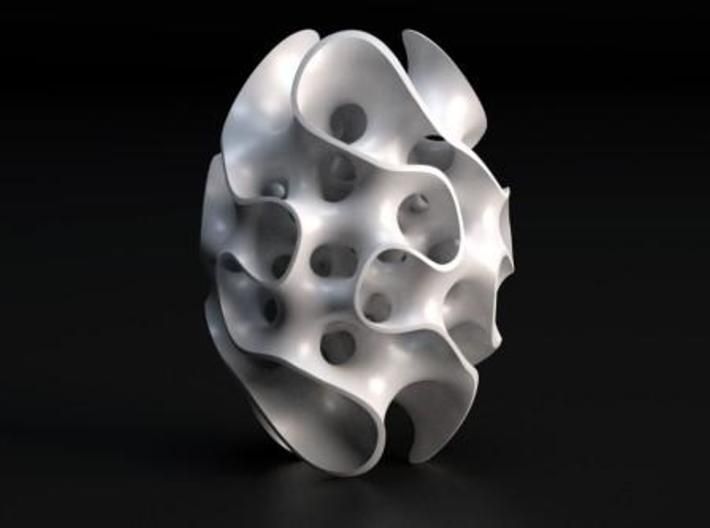 Printed as three separate pieces, the handle and paint drips both snap onto the main bucket without glue or screws required. It’s the perfect container for pens, dice, or even loose change.
Printed as three separate pieces, the handle and paint drips both snap onto the main bucket without glue or screws required. It’s the perfect container for pens, dice, or even loose change.
- Designed by: davemoneysign
- Where to get: PrusaPrinters
Fractal Vise
Not only is this fractal vise model extremely cool-looking, it is also an incredibly useful tool once fully assembled.
This project requires quite a bit of hardware, including multiple sizes of bolts and screws, as well as lengths of both smooth and threaded rods. Assembling the vise is also quite time-consuming, but the designer thankfully has a video tutorial outlining the whole process.
- Designed by: TeachingTech
- Where to get: Thingiverse
Squeeze Fan
This hand-powered squeeze fan is as useful as it is fun. Using the handle pushes the inner gears and turns the propellers. This design is perfect for camping trips, emergency kits, and other scenarios where power or batteries might be hard to come by.
This design is perfect for camping trips, emergency kits, and other scenarios where power or batteries might be hard to come by.
- Designed by: GeorgeZSL
- Where to get: Thingiverse
Face Shield
With the pandemic still in full swing, personal protection equipment is as important as ever. This basic face shield was designed by the Prusa research team and gained EU certification as a viable personal protection tool.
Whether you are still looking for protective methods from COVID-19 or work in an industry that requires face shields, this model is fast and easy to print.
- Designed by: Prusa Research
- Where to get: PrusaPrinters
Lithophane Moon Lamp
This project uses a lithophane model that maps the actual surface topography of the moon to make a realistic miniature rendering of it. This version adds tripod legs and a hole on the bottom for a light to make it a functional, beautiful lamp.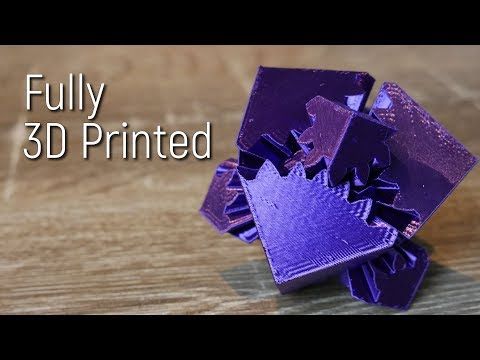
- Designed by: Frank Deschner
- Where to get: PrusaPrinters
Landy Mini
If you think this is a basic miniature car model, think again. Assembled with only a handful of screws, the Landy Mini has a fully functioning suspension system.
Though it’s a bit time-consuming to print and assemble, the Landy Mini is a fun and well-designed project that would look great on a desk or shelf in your home or office.
- Designed by: 3D Sets
- Where to get: PrusaPrinters
Self-Watering Planter
Love plants but have a brown thumb? This self-watering planter slowly feeds in water from a reservoir as the soil dries. So even if you forget to water them for a few days (or weeks, let’s be honest), they’ll still get the care they need.
- Designed by: Mikolas Zuza
- Where to get: PrusaPrinters
Split-Flap Display
Based on the split-flap displays of the past, this model uses a handful of components and a wireless adapter to make a DIY digital split-flap display that connects to your network. You can program it to work as a clock, calendar, message board, or whatever else you can think of.
You can program it to work as a clock, calendar, message board, or whatever else you can think of.
- Designed by: David Kingsman
- Where to get: PrusaPrinters
Cryptex
Inspired by the Da Vinci Code, this cryptex has a small compartment to hide things like candies, jewelry, or notes inside. You can program the cryptex to open for a specific series of letters, much like a combination lock.
While this is in no way a secure place to store anything valuable (it is printed from plastic, after all), it’s a funny way to keep coworkers out of your sweets, to give someone a gift, or to play a game with your kids.
Recommended:
The 8 Best 3D Printers for Kids
- Designed by: Cees
- Where to get: PrusaPrinters
Bag Clip
A stark improvement on the chip clips of old, this clip prints in place with minimal supports. It uses a three-hinge system, so it stays on the bag more securely without slipping off.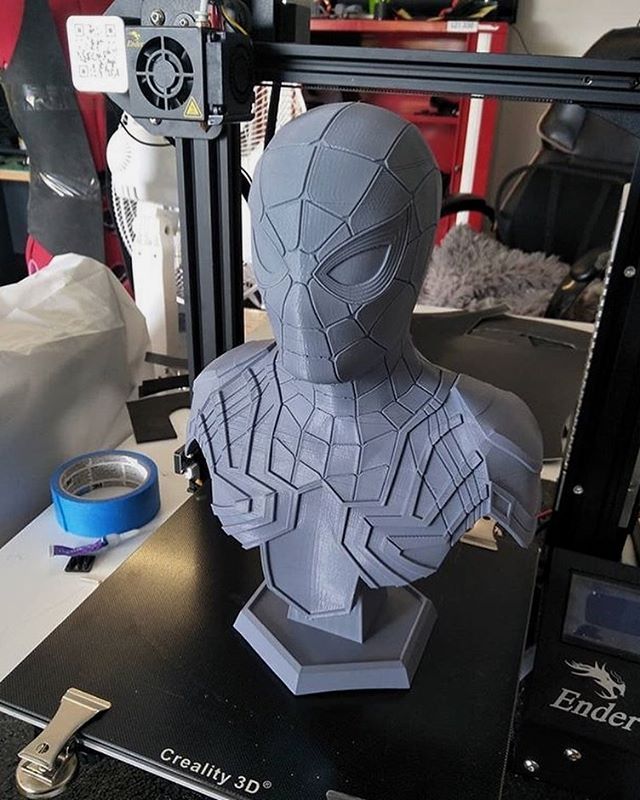 If you want something that will be quick and easy to print, this is a great option.
If you want something that will be quick and easy to print, this is a great option.
- Designed by: Andrei
- Where to get: PrusaPrinters
Rotating Rings Toy
The mini gyroscope has remained one of the most popular fidget toys in the 3D printing community for several years, most likely due to its unique design. It prints in place and can be used right off the build plate.
- Designed by: Marvin
- Where to get: PrusaPrinters
Mantis Clamp
The mantis clamp is an interesting take on a vise design, using a hand crank and gears to tighten and loosen the clamp. As illustrated in the photo below, that makes it a handy device for holding up small things like electronics components, painting miniatures, and so on.
- Designed by: zuberio
- Where to get: PrusaPrinters
Deadpool Bust
This fine-detailed Deadpool bust is a great novelty item for any Marvel fan. Printing this model in 3D printer resin on a resin 3D printer maintains the model’s high level of detail, whereas using a metallic filament like CopperFill or BronzeFill on a fused deposition modeling (FDM) 3D printer will give it the appearance of a metal cast statue.
Printing this model in 3D printer resin on a resin 3D printer maintains the model’s high level of detail, whereas using a metallic filament like CopperFill or BronzeFill on a fused deposition modeling (FDM) 3D printer will give it the appearance of a metal cast statue.
- Designed by: Eastman
- Where to get: PrusaPrinters
Avocado Seed Floater
Sprouting avocado seeds is a little more delicate than just dropping them in some potting soil and hoping for the best. They need to be partially submerged in water for several days for the pits to start growing a sprout. Luckily, this is easy to control with this 3D printed seed floater.
- Designed by: Mikolas Zuza
- Where to get: PrusaPrinters
Drill Depth Stop
When you need a specific stopping point for your drill bit, these printable drill depth stops are an easy and economical way to keep your drill from going too deeply into your material.
The model offers a variety of sizes that correspond with popular drill bit dimensions, so you should be able to find one that suits your needs regardless of which drill bit size you use.
- Designed by: Highrise Workshop
- Where to get: PrusaPrinters
Sunflower Clock
Unlike the other clock we shared in this list, this beautiful design is a fully functional wall clock with added electronic components. This clock has a lot of different pieces to print, thanks to the thin bands of PETG used for the petals. It takes some time to assemble, but the final look is worth the effort.
- Designed by: Romano Rugeri
- Where to get: PrusaPrinters
Cute Skull Lamp
We’d say these skull lamps are a perfect addition to your Halloween decor, but they’re so adorable that you’ll probably want to keep them up year-round. They are easy to print and only take an inexpensive strand of LED lights and a few batteries to assemble them.
- Designed by: rayjizza
- Where to get: PrusaPrinters
Ancient Guardian from Zelda BOTW
Any Nintendo gamers reading this will automatically know what these deceptively innocent-looking articulated robots are, and probably started sweating and hearing dramatic piano music the moment they spotted them.
But if you haven’t been totally traumatized yet by the ancient guardians during your BOTW playthrough, these models are a must-print item. The legs are fully articulated and print in place, so you can just pop the entire figure off the build plate and immediately start your campaign to bring down Hyrule.
- Designed by: Crafty Sven
- Where to get: PrusaPrinters
Ornamental Bulbasaur
If you haven’t gotten enough Bulbasaur from Bulbasaur planters, low-poly figurines, or Pokemon chess sets, you’re in luck. This ornamental Bulbasaur model is one in a set of three decorative Pokemon models that you can print for free.
Since the model uses a lot of Victorian filigree elements, it looks fantastic with a metallic finish, especially with a patina. They acquired that look in the photo below using paint, but metal-filled filaments or cold casting the model in resin are two other possibilities for making this model look its best.
- Designed by: Psdwizzard
- Where to get: Thingiverse
3D Printable Drone
For a functional mini-drone, this design works well and is a lot of fun to use. Designed around a battery case for a single lithium battery, it is not going to be very powerful. However, it does work and it is a good beginner project for those wanting to learn how to 3D print and build more capable drones.
- Designed by: David Cledon
- Where to get: Thingiverse
Back Loaded Horn Speaker
This little printed speaker transforms into a powerful Bluetooth speaker with a little assembly and about $20 in components. Even better, the designer includes a wiring diagram and full assembly instructions along with the free STL, so even if you are new to this type of project, you can easily follow along.
Even better, the designer includes a wiring diagram and full assembly instructions along with the free STL, so even if you are new to this type of project, you can easily follow along.
- Designed by: guppyk
- Where to get: Thingiverse
Among Us Crew/Body/Ghost/Imposter
This five-piece set of Among Us models is a fun project for fans of the game. With all of the character types in the game available, you can vary the colors of each model to account for any possible in-game combination.
- Designed by: WalRit
- Where to get: Thingiverse
Print-in-Place Bearings
If you need bearings for one of your projects or you just want to give your printer a nice torture test to check its calibration, these print-in-place bearings are the answer. Designed in five common sizes, these models should have all the options you need for most projects.
- Designed by: guppyk
- Where to get: Thingiverse
Helmet Hanger
Both functional and decorative, this 3D printing project is the perfect solution for storing your helmet while also showing it off.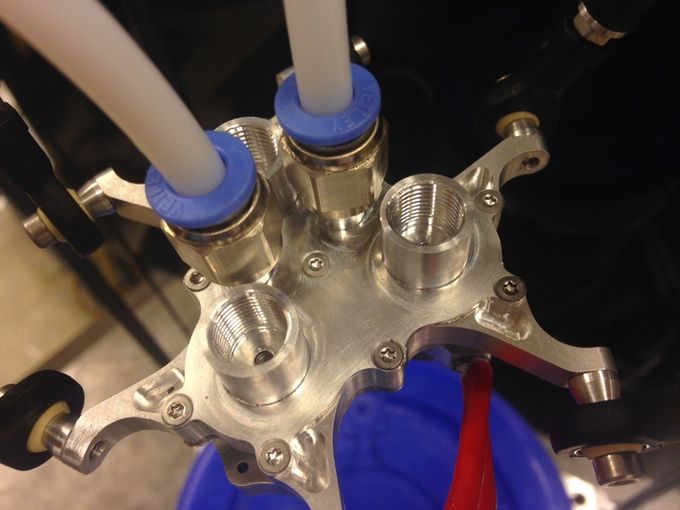 The model is easy to print and allows for printing the sphere whole with supports or in two pieces without supports (to glue together after).
The model is easy to print and allows for printing the sphere whole with supports or in two pieces without supports (to glue together after).
- Designed by: Sergi Lorenzo
- Where to get: Thingiverse
Tensegrity Table
When regular furniture gets too boring, choose some that appears to defy physics instead. This small table ties the bottom and top parts together with string, and the tension keeps the table parts upright. While the designer used blue string, a clear string is ideal because it’s harder to see and makes the table really look like it’s floating.
- Designed by: Austin Steingrube
- Where to get: Thingiverse
Hydroponic Self-Watering Seeds Starter
Another model for the gardening-challenged, these cute self-watering planters will keep your plants watered and nourished even if you don’t. The planter comes in five different poses, with some sitting flat and others dangling their legs over a ledge, you can get really creative in staging your planter people on your desk, table, or shelf.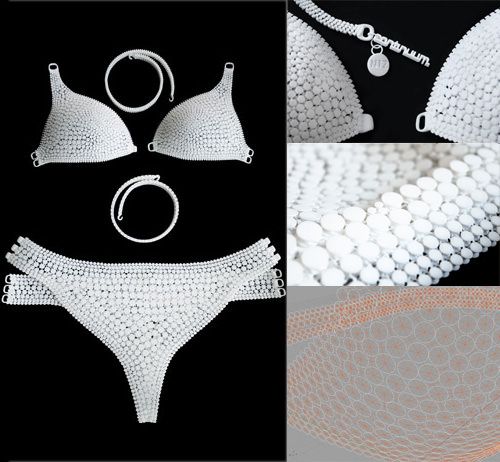
- Designed by: Studio Aditivo
- Where to get: PrusaPrinter
Print-in-Place Briefcase
Need a place to store your miniature work documents? What about your doll-sized stacks of money? This print-in-place briefcase does exactly what it says: it prints a miniature briefcase in one piece with fully functioning hinges and latches straight off the build plate.
This model (and other print-in-place projects) are a good way to test your printer’s calibration and to see where it’s having issues.
- Designed by: Dehapro
- Where to get: Cults
Bone Fingers
These articulated bone fingers bend with your fingers, making their movements look incredibly realistic. The project requires quite a bit of gluing and assembly after printing, but they are a stunning addition to cosplay outfits and Halloween costumes.
- Designed by: Littletup
- Where to get: Cults
Lazy Dogs
Yet another print-in-place project on the list. These adorable canines have articulated hinges in their body that gives them a wider range of flexibility. While they are mainly for decorative (or playful) purposes, these little dogs are quite popular with kids.
These adorable canines have articulated hinges in their body that gives them a wider range of flexibility. While they are mainly for decorative (or playful) purposes, these little dogs are quite popular with kids.
- Designed by: Mcgybeer
- Where to get: Cults
Hexagonal LED Panels
DIY printed light fixtures are one of the easiest ways to customize your decor, and these hexagonal LED panels are one of the best options we’ve seen.
Each hexagon light is printed and assembled separately before being fit together, which leaves plenty of room for creativity. Each light panel could have a different LED color, or work through a controller to loop through certain behaviors like blinking, twinkling, or transitioning through the RGB spectrum.
- Designed by: Jim Misel
- Where to get: Thingiverse
Mechanical Quick Grab/Release Phone Stand
This phone stand tightens around the phone when it’s placed in the cradle and loosens when the phone is lifted off. It also rotates the phone up, down, and side to side while it is in the holder for optimal viewing at any angle.
It also rotates the phone up, down, and side to side while it is in the holder for optimal viewing at any angle.
- Designed by: Arron Mollet
- Where to get: Thingiverse
Slim Credit Card Wallet
When you want the bare essentials to keep your pockets from being weighed down, a card wallet is an essential accessory. This particular one is fully printed and comes with the added bonus of an ejector button to help you easily remove your cards when you need them.
- Designed by: Aljaz Titoric
- Where to get: Thingiverse
Measuring Cube
A modern take on the old concept of measuring cups, these cubes are a fun way to incorporate the different measurement sizes into one piece. However, we don’t recommend using them for liquids in the kitchen since the small gaps between layers in 3D prints are not watertight.
- Designed by: Matt Stengler
- Where to get: Thingiverse
Thor Hammer
One of the more iconic Marvel props in the 3D printing community, Thor’s hammer is easy to print and looks great on display. While it has a lot of fine details that would be best captured with a resin 3D printer, it will be challenging to print it at full scale on most consumer resin printers.
While it has a lot of fine details that would be best captured with a resin 3D printer, it will be challenging to print it at full scale on most consumer resin printers.
- Designed by: Rob Pauza
- Where to get: MyMiniFactory
CNC Machine
One of the best things about having a 3D printer is the ability to use it to produce additional printers or machines. This CNC machine is a perfect example of that. It uses 3D printed joints to assemble the rails, motors, and carving tool into a fully functional CNC.
- Designed by: Creative Think
- Where to get: Thingiverse
Raspberry Pi 4 Case
In case you missed it, this list is full of projects and ideas that use Raspberry Pi boards as the controller. Being small, cheap, and surprisingly flexible in its capabilities, the Pi lends itself extremely well to 3D printing.
With that in mind, it’s no surprise that you can find dozens of models for Raspberry Pi cases on most of the project sharing websites. This one has one of the more attractive and functional designs available.
This one has one of the more attractive and functional designs available.
- Designed by: Carter
- Where to get: PrusaPrinters
Prusa Enclosure
Enclosures are often a necessity for printing ABS and other high-temperature filaments successfully, but DIY and budget printers rarely have them incorporated into their design. Fully enclosed 3D printers do exist, but they come at a price. Thankfully, enclosures are not overly difficult to make yourself, especially when upcycling existing furniture like this build.
This project gives you all the pieces needed to turn an IKEA Lack table into a functional 3D printing enclosure and filament station. While it is specifically designed for Prusa 3D printers, any printer that fits on a Lack table should work with this project.
Recommended:
9 Amazing DIY 3D Printer Enclosure Ideas
- Designed by: Ondřej Stříteský
- Where to get: PrusaPrinters
Fidget Infinity Cube
While fidget toys are always a popular category for 3D printing, these fidget cubes are especially interesting. Using a hinge design, you can fold and unfold the cubes in multiple directions.
Using a hinge design, you can fold and unfold the cubes in multiple directions.
This model prints flat and requires no assembly after printing. Since the hinges print in place, this project may take some experimentation with printer settings and calibration before it is printed successfully. The designer includes a test print with the model files so you can quickly try out different print settings without printing the full model.
- Designed by: Austin Vojta
- Where to get: PrusaPrinters
Addams Family Thing
Yet another spooky prop on the list, the Thing from the Addams Family is a great item to add to your Halloween decor. This is a model with a high level of detail (especially around the knuckles and nail beds) that would do well with resin printing.
Recommended:
Resin vs Filament 3D Printers: What’s the Difference?
- Designed by: Js-studio
- Where to get: PrusaPrinters
Collapsible Basket
Our final pick for print-in-place designs, the collapsible basket is fun to print, cool to use, and easy to put in storage when you don’t need it.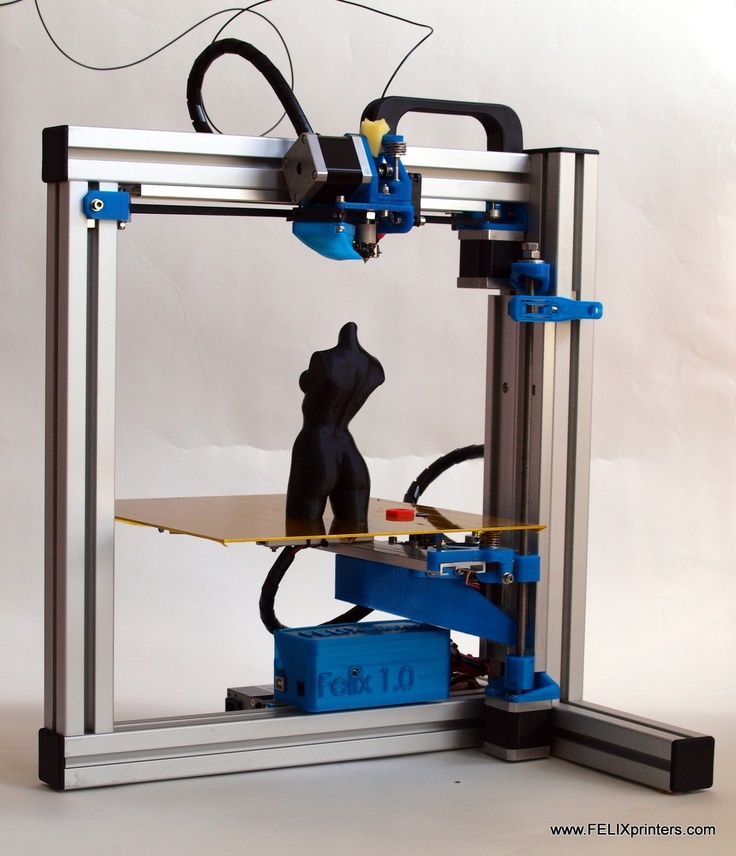
- Designed by: 3D Printing World
- Where to get: PrusaPrinters
Conclusion
Those were 51 of the coolest free 3D printing models! Did you like our picks? Have you printed any of these models before? Let us know in the comment section down below!
Scroll to Top
A small guide for choosing a 3D printer for beginners / Sudo Null IT News
The reason for writing this article was the article “ I wanted to buy an inexpensive 3D printer, but I looked at YouTube and got sick of ”, at the end of which the author asks to answer a few questions. I will try to answer from the point of view of my seven years of experience as a 3D modeler and 3D printer. First, a few caveats.
This article will not contain advice: “Buy a printer from manufacturer X - it is good, and manufacturer Y - do not take it in any case”, only general recommendations.
Informal classification of printers, adopted in the domestic segment of printers.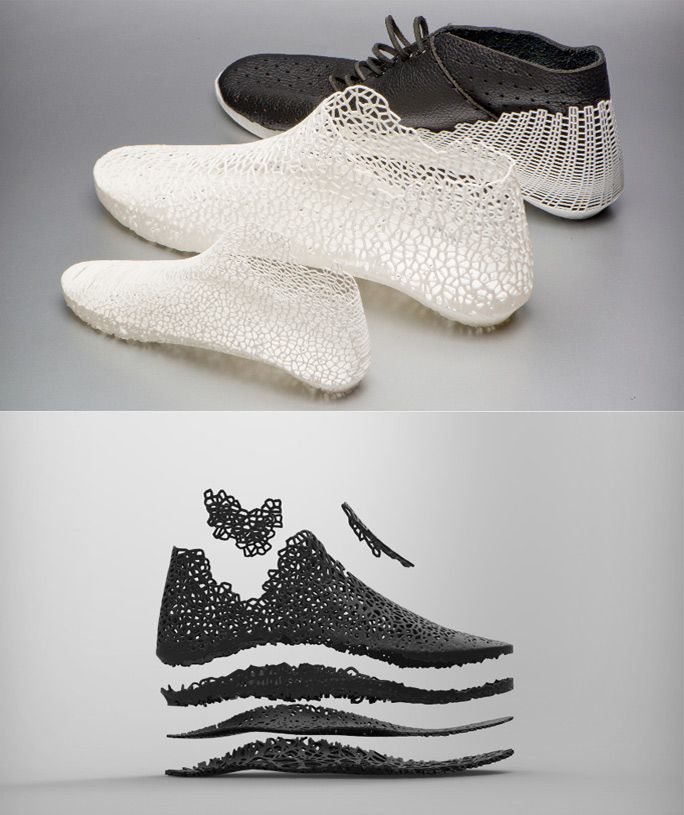
Everything written is based on the personal experience of the author and is his personal opinion.
If these warnings do not scare you - welcome under cat.
First, let me introduce myself: my name is Maxim and I bought the first printer back in 2013. It was a Chinese clone of Makerbot 2 with the hilarious name "Migce Cuble".
Photo from the personal archive There was almost no information on 3D printing on RuNet, only one topic on the “Roboforum” and several scattered articles about what a cool thing it is - 3D printing, so to master it, I had to google a lot in English, come up with their crutches and delve deeply into the physics and technology of the printer. We must pay tribute, in the English-speaking segment, then there was an active development of this technology and interesting articles such as “Selection of the type of notches of the extruder feed gear for a specific type of plastic” or “Determination of the optimal printing temperature using a strain gauge installed on the extruder” came across. Since then, 7 years have passed. I managed to master modeling, assemble a printer from scratch, be a moderator of “3D Today” for a while, work as a freelancer in the field of modeling and printing, organize a prototyping circle for children and bring it to the Russian level. Recent achievements: volunteered as a coordinator for the supply of plastic in the project “ Anti covid makers ”. A lot has changed during this time, including printers in my home zoo. One thing has remained unchanged - the question: "What should I buy as my first printer?".
Since then, 7 years have passed. I managed to master modeling, assemble a printer from scratch, be a moderator of “3D Today” for a while, work as a freelancer in the field of modeling and printing, organize a prototyping circle for children and bring it to the Russian level. Recent achievements: volunteered as a coordinator for the supply of plastic in the project “ Anti covid makers ”. A lot has changed during this time, including printers in my home zoo. One thing has remained unchanged - the question: "What should I buy as my first printer?".
Currently, two types of printers are mainly used at home: printing using FDM (FFF) technology - layer-by-layer plastic fusion, which is fed in the form of a rod and SLA (LCD) - printing with a photocuring polymer. FDM technology is more common, due to the lower cost of equipment and consumables, but in recent years, the prices of LCD printers and printing resins have decreased significantly and photopolymer printing has almost caught up with FDM printing in terms of cost and entry level.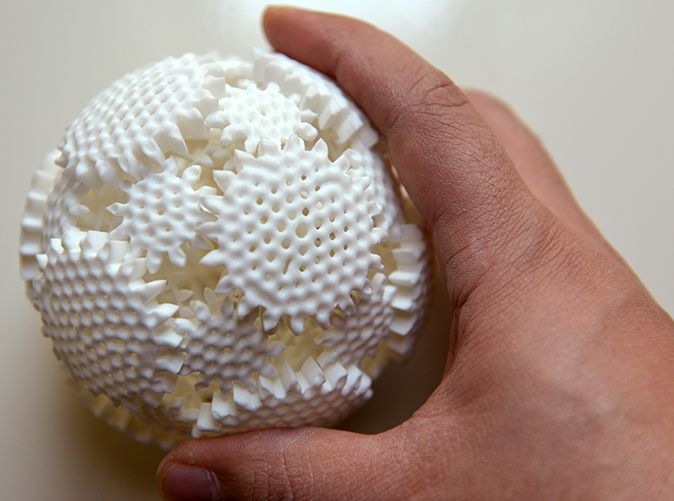
To be honest, I almost never did SLA printing and I still don’t have an LCD printer in my home zoo (but it may appear soon), so I will mainly talk about FDM printers. They can be divided into 3 main categories according to the type of mechanics:
Dried tables - printers with a table that moves horizontally. Perhaps the most common printer model. It is distinguished by low cost of components, ease of assembly and adjustment, for which it is loved by the Chinese and printers. The disadvantages include the difficulty of creating a closed body and printing thin, tall parts that begin to wobble as the height increases, especially if the part is printed from flexible plastic such as TPU.
Typical drygosts Cubes - printers in which the table travels vertically. The cost of such printers is higher, as are the requirements for straightness of hands during assembly and setup. But a properly designed die delivers faster print speeds while maintaining print quality. At the same time, the design of the printer is very easy to make closed, which allows printing with engineering plastics such as ABS and Nylon. This type of design is often used in semi-industrial and industrial grade printers. Some manufacturers manage to shove the drygost into the body of the cube, but this does not bring any special advantages for printers.
At the same time, the design of the printer is very easy to make closed, which allows printing with engineering plastics such as ABS and Nylon. This type of design is often used in semi-industrial and industrial grade printers. Some manufacturers manage to shove the drygost into the body of the cube, but this does not bring any special advantages for printers.
Delta - printers with the so-called delta kinematics, when the print head is attached to the carriages moving along vertical guides using a system of rods. The cost of the mechanics of such printers is comparable to the cost of dry-tables. Can print at very high speeds. But they are very demanding on the correctness of keeping the dimensions, the straightness of the hands during assembly and adjustment, and the speed of the “brains” due to the complex mathematical calculations of the trajectory of the head movement.
Strongly not recommended as a first printer, although the widespread use of the table level sensor somewhat reduces the requirements for straight hands during setup and operation.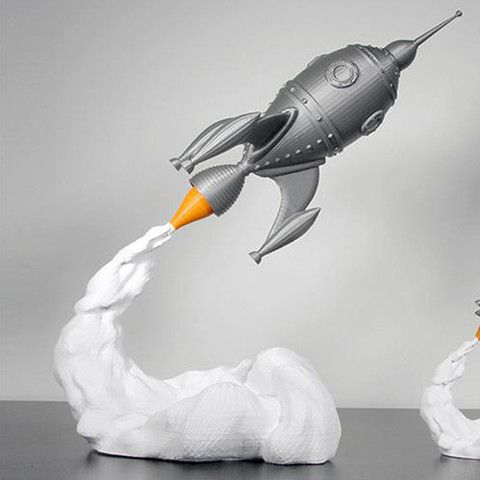
By availability on the market, 3 main categories can also be distinguished:
Chinese (cheap Chinese printers) are almost always designers, even if they come assembled.
-
The advantages include low cost, wide distribution and uniformity, which allows you to buy failed parts in the nearest radio shop or on well-known Chinese sites. Popular models gather around a relatively large number of users who actively share their experience in the field of self-repair and improvement of this type of printer. The most popular models will most likely be printed right out of the box, but will require improvements during more or less long-term operation.
-
The disadvantages include the quality of components / assembly and the need to refine these printers to obtain acceptable quality / print speed. It is recommended to take models that have already formed a large community around them. This means that most of the shortcomings have already been identified and there are standard inexpensive methods to solve them.

Kits (assembly kits, mainly domestic production) - google for the words “ ZAV ”, “ UlTi ”, “ UlTi ”, etc. Usually they are a set for assembling a plywood cube. Recently, options with metal cases have appeared. Supplied in different versions - from a kit for building a case with printed parts, ending with completely finished assembled products.
-
The pluses include a fairly good engineering study, the ability to choose the components for the mechanical and electronic parts and make the printer completely to your requirements. With good components, they provide fast, stable and high-quality printing. The price is somewhat more expensive than Chinese printers, but cheaper than semi-professional printers of domestic or European / American manufacturers.
-
The disadvantages include a decent amount of time spent on assembly and waiting for components if you decide to save money and order these components yourself from different sellers and assemble a printer from them.
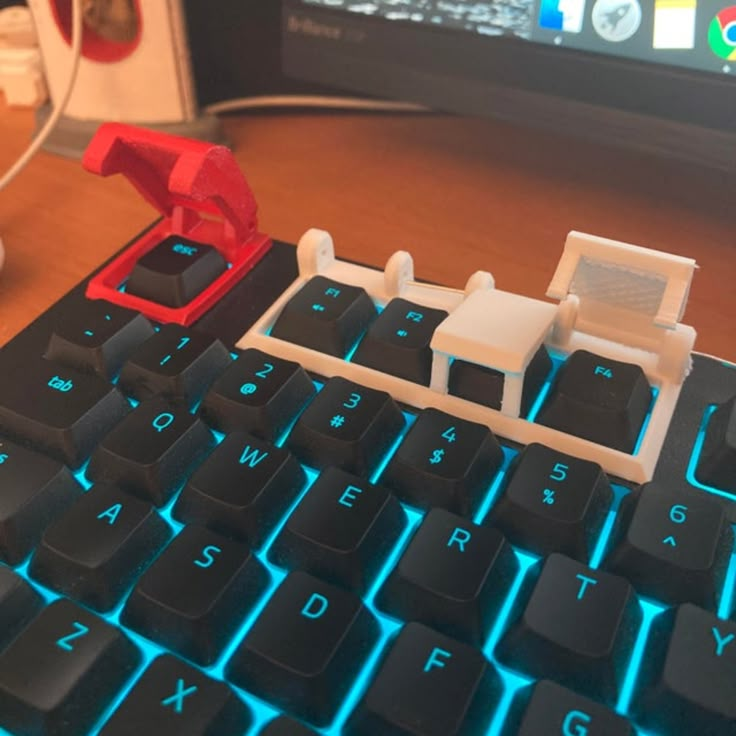 When assembling, direct hands are required.
When assembling, direct hands are required.
Factory Printers (Semi-professional printers from domestic or American/European manufacturers). There are a lot of models, the designs are very different.
-
The advantage of this class of printers is printing with acceptable quality out of the box. In addition, you get operational reliability and warranty support from the manufacturer.
-
The main disadvantage is the price. It is often not clear what factors it depends on. You can buy a high-quality printer relatively inexpensively, or you can take something incomprehensible for a high price. The second disadvantage is the presence of specific solutions that are incompatible with popular solutions on the market: these can be nozzles with their own thread pitch, special fans, electronics, belts, and even slicers. Some are demanding on the quality of plastic, there are models that work only on chipped coils.
Now that we have decided on the classification of printers, we can proceed to the procedure for choosing a printer for yourself, your loved one.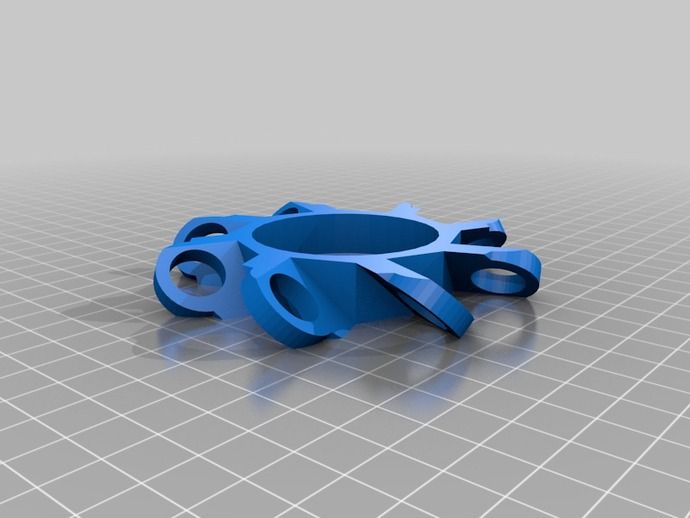 If you are on fire with the purchase of a 3D printer, first decide what you are going to take it for, the type and configuration of the printer depends on it. Let's analyze several typical situations:
If you are on fire with the purchase of a 3D printer, first decide what you are going to take it for, the type and configuration of the printer depends on it. Let's analyze several typical situations:
I want to do something for myself and my family - if you don't plan to print products from engineering plastics that can withstand decent loads and temperatures, a Chinese drygostol or a cube will suffice. If you have a budget and want to figure out how the printer works before starting, and not during printing, you can look in the direction of domestic assembly kits - with them you can get the best quality and painlessly switch to engineering plastics.
I can't do anything with my hands, but I have to. Therefore, I want a printer that will do everything for me - in this case it is better to look at semi-professional printers. If the budget is not enough, you can look at used ones or order an assembly of a domestic set - usually manufacturers offer this service through intermediaries.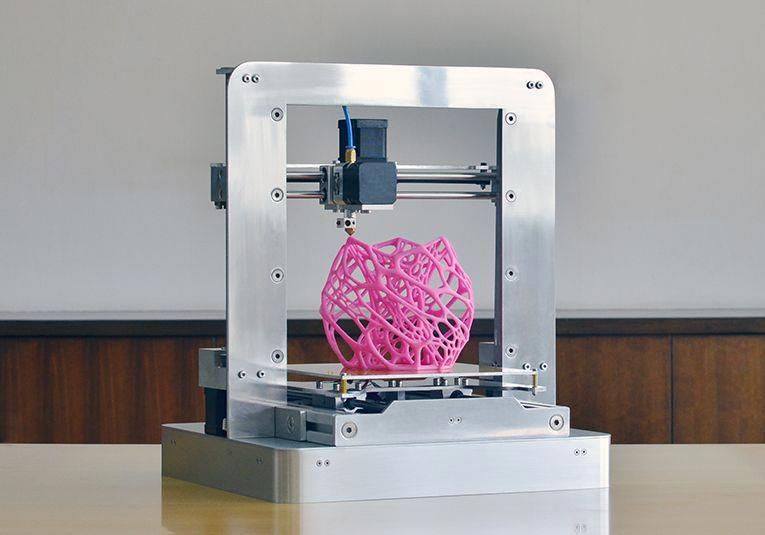 When ordering an assembly - look for experience and positive reviews, there are nuances.
When ordering an assembly - look for experience and positive reviews, there are nuances.
I want to print for sale - a farm of the same type of printers, depending on the budget. If there is no budget, but there are resources for regular tuning / repair - you can even from Chinese drygosts. Additionally - a printer with a large print area, a printer with a closed case and a heated table for printing engineering plastics, an SLA / LCD printer for printing products with a high degree of detail.
Whether at work or at home, the need arises to design and print enclosures and parts. If only small prototypes are planned - an LCD printer, if functional products - a closed cube with the ability to print with engineering plastics.
Kids are growing up and this is the technology of the future, I want you to master - see what printers are used in prototyping competitions in your area. Take the same one. May be used.
I want to make figurines for desktops, beautiful little things for home - LCD printer.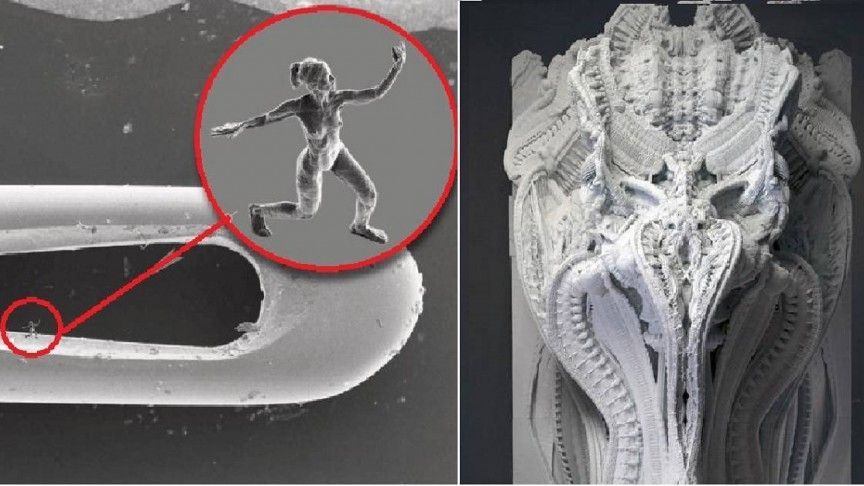
I want to figure out what kind of technology and how it works in general - a kit for assembling a domestic manufacturer. By the time you collect it, you will understand.
There is no money at all, but I want to print, I will collect it myself from scratch - it will turn out better and cheaper than the Chinese. Strange as it may seem, no. The cost of components with Ali will be more expensive than a printer with Ali. Of course, if there is a machine park, the ability to use it, a set of iron, shafts and electronics lying around in the corner of the workshop, it can burn out. There are options for building printers from boards and furniture rails, but their print quality is, to put it mildly, lame. For example, the construction of the printer shown below cost its author 80-9, according to him.0 dollars.
If you want to completely build your printer from scratch, then it's better to treat it as a separate hobby and accept that it will not turn out very cheap.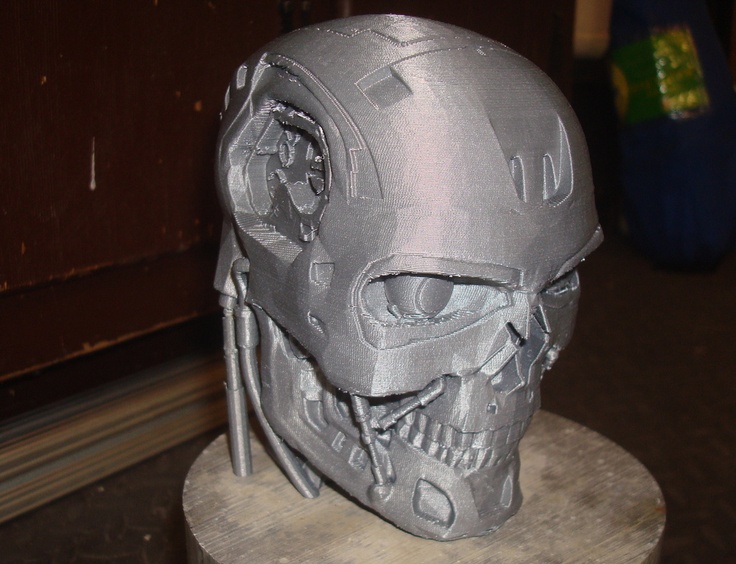 Well, or look in the direction of used printers.
Well, or look in the direction of used printers.
I don’t know why I need a printer, but I want to try - a Chinese or a domestic assembly kit. Can be used. If it doesn't work, you can always resell.
Decided on the type of printer - what to look for first of all when buying ?
-
First of all - on the rigidity of the structure - the accuracy and speed of printing depend on it. It is in the direction of strengthening the rigidity that your first modifications of the Chinese printer will be directed, since the material “steel plasticine 3 (c)” is considered an unaffordable luxury for the Chinese. In the case of the purchase of domestic kits, the situation is slightly better.
-
Secondly - if the printer will be in the apartment - "silent" drivers for stepper motors. 3D printing is not a fast process, and having a constant loud enough buzzer under your ear is annoying.
-
Third - the presence of a heated table and ease of modification to a closed case.
 Over time, the desire (need) to print ABS will come, and it is problematic to do this on an open drygost.
Over time, the desire (need) to print ABS will come, and it is problematic to do this on an open drygost. -
Fourthly, the presence of a good plastic blowing system is also important.
-
Fifthly, when choosing printers with CoreXY, H-Bot or Delta mechanics, it is highly desirable to have a 32-bit control board, or you will encounter fading (freezes) at high print speeds.
-
In the sixth, seventh, etc. - there are many nuances in the design of printers. If something is unclear, feel free to ask the community.
In any case, if you are going to buy or have already bought a 3D printer, start learning some 3D editor. The easiest, in my opinion - https://www.tinkercad.com . You can simulate a washer in it or the well-known plate changer without much effort.
Over time, its capabilities will no longer be enough - then you can switch to more serious CAD systems. In my opinion, a printer should own two types of editors - a solid state for modeling technical products (CAD) and a polygonal tool (Blender, etc.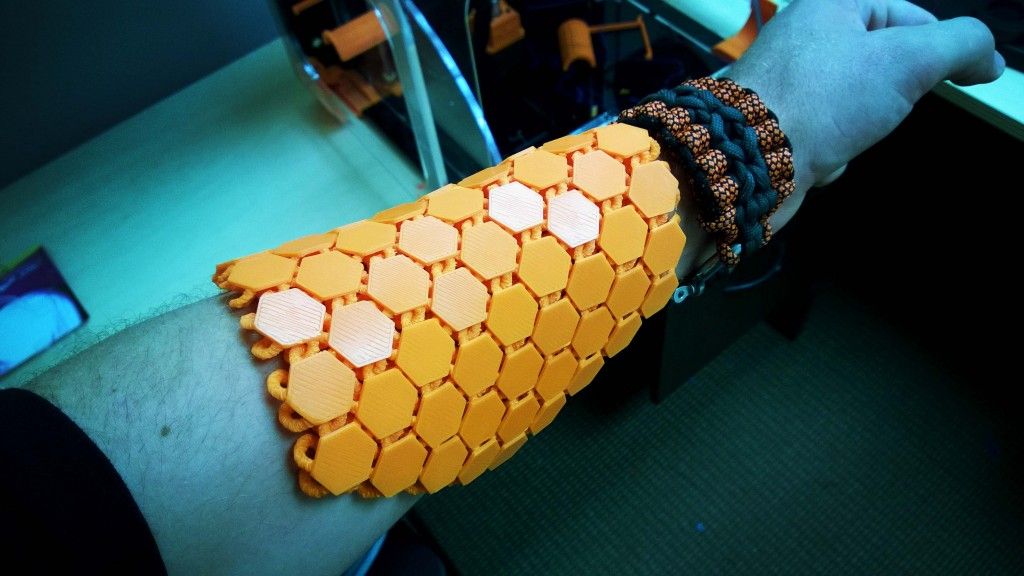 ) - for modeling artistic ones, but many printers consider this redundant and master only one.
) - for modeling artistic ones, but many printers consider this redundant and master only one.
On this, perhaps, I will round off - the article has already turned out to be quite voluminous, if you have questions, I will be happy to answer them in the comments or in a separate article. I’ll say right away - I won’t answer questions like: “ which is better: flying bear 5 or ender 3 ” - a lot of copies have already been broken on this topic on specialized resources, I don’t see the point in repeating.
Best regards, Maxim.
Anycubic Wash & Cure 2.0. Washing and lighting for SLA 3d printers.
Finally, the hands reach the reviews of goods purchased on 11.11 and 25.11.
One of the things I've been wanting to try for a long time was the Wash-Illumination of details (Voshkur folks) after printing on photopolymers. But the price tag on it always pushed me away, about 8-12 tons to give for such a little thing, a toad choked me.
I wash in a bath and candle in nail lamps. It works great, but sometimes it's inconvenient, especially when you print a lot of details later.
It works great, but sometimes it's inconvenient, especially when you print a lot of details later.
And then a lot came across - Printer Cube Mono + sink went for 215 dollars. I decided that I would always find a place to attach the printer, and at the same time I could make a review on it.
And after some time of waiting they arrived. By the way, according to the very strange logic of the Ekubikovs, the printer was sent to the CSE, the sink was sent to the DPD.
The sink is well packaged. The box was dented, but the insides were not damaged.
The first impression is that the emblem was crookedly pasted on the cap. On the back of the bottom there is a sticker that can not be removed. On the reverse side there is a sensor that does not start the illumination until the cap is worn. Eye care.
But I don't understand this "fashion" to make transparent caps for the printer and sink. As for me, a black (opaque) cap is practical for a printer, but for a sink you can generally glue / cover it with foil inside with something shiny.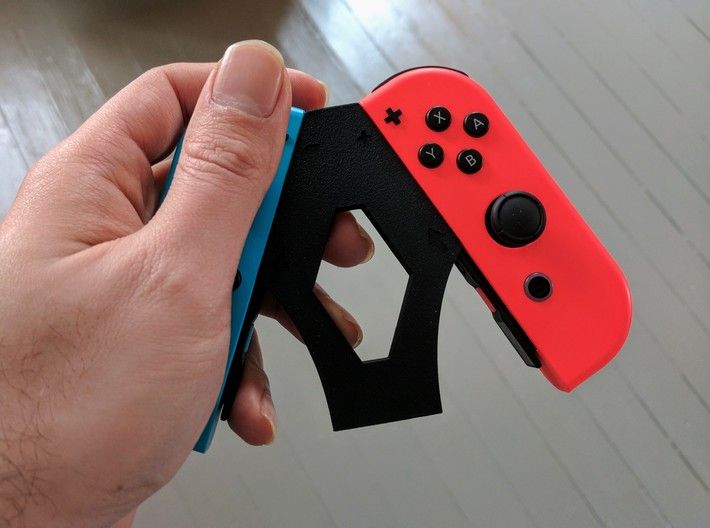 So that the reflected rays are better illuminated from all sides. There is a 100% guarantee that all UV will linger inside.
So that the reflected rays are better illuminated from all sides. There is a 100% guarantee that all UV will linger inside.
This is how what was in the “cap” looks like. Jar with lid, table reflector, instructions, power supply, mesh for placing parts during washing.
A protective film is installed on the reflector (in case someone did not know), it will have to be removed.
Short, concise, color instructions. Although in English, but very detailed. I think almost everything you need - they described.
And here is the external power supply.
Ergonomics is a complicated word. And its application seems to be even more difficult. Enkubiku was up to one place your problems, that one power supply will block 3 outlets at the same time. As an example in the photo, the power supply from Voxelab \ FlashForge, where the power supply is on the wire and does not take up extra space in the extension cord.
Let's move on to the "magic jar"
A grid is installed inside it into which you can throw details, or you can fix the table from above. And the container itself is sealed.
And the container itself is sealed.
Blades on the bottom. It is arranged like this - a thread is soldered into a jar, aluminum blades with magnetic bosses are wound on top. The same magnetic bosses are inside the sink. We put the jar, they magnetize with each other, and when the motor rotates, the liquid “rotates” inside the jar. And with such mixing, the details are washed.
This carton was still in the package under the base of the printer. It contains several keys, a warranty card, an iron mount for the platform inside the container, a transparent turntable and a spare bearing.
Speaking of bearings. Since it is inside the container, I think it will not live very long. It will operate in an alcohol/dirty tar or water/dirty tar environment, depending on user preferences. I don't think it will last long under these conditions.
This is what the platform itself looks like. Visible "gear", this is to accommodate the turntable. And a pole with UV diodes, which will light up the detail.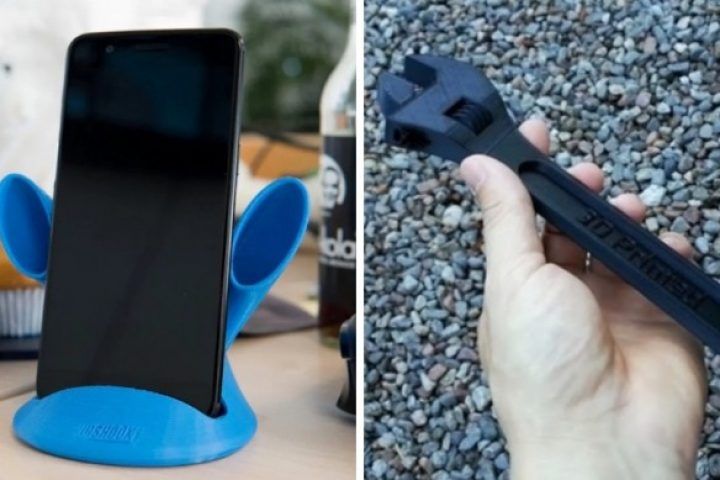
Management is quite simple, nothing more. Washing / lighting mode switching button, two indicators of the selected mode, a screen displaying the operating time and a knob for selecting the desired time.
At the back of the panel there is a connector for connecting the power supply, a toggle switch for turning on and a “closed hood” sensor.
There is nothing more interesting outside, you have to look inside.
The whole base is made of thin plastic with stiffeners, the bottom is made of steel. For this device, more than enough, but in the hands it all feels very “liquid”, even for such money.
There are two small boards inside, an ordinary stepper motor as they are on 3D printers, and all this is fixed on an equally thinnest plastic bracket. Which burst at the factory when tightening. Excellent, reliable, like, sarcasm.
There is also a LOT of empty space inside. In which the power supply would fit perfectly.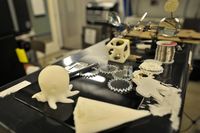 But… it's not about the Enicubic.
But… it's not about the Enicubic.
And this is how the whole "working set" actually looks like.
Another stone in the same "ergonomics". I wanted to put a table, a container on top and close the lid. It is logical when all the accessories fit inside and do not roll around on the table. But no, this is not about Enikubik. Make the cap a couple of centimeters higher and everything would be fine. But alas.
Therefore, the sink on the table will take up space like this.
Now back to reality. It seems like we forked out, bought a sink. But washing in one container is not very correct. Alcohol deteriorates very quickly. The alcohol mixes with the resin and won't wash it clean. Just pour out and pour again 3 liters of alcohol. This is very wasteful. Therefore, a second container is needed.
In the first one it washes first, let's call it dirty alcohol. Then a relatively clean part must be placed in a second container, there will be pure alcohol.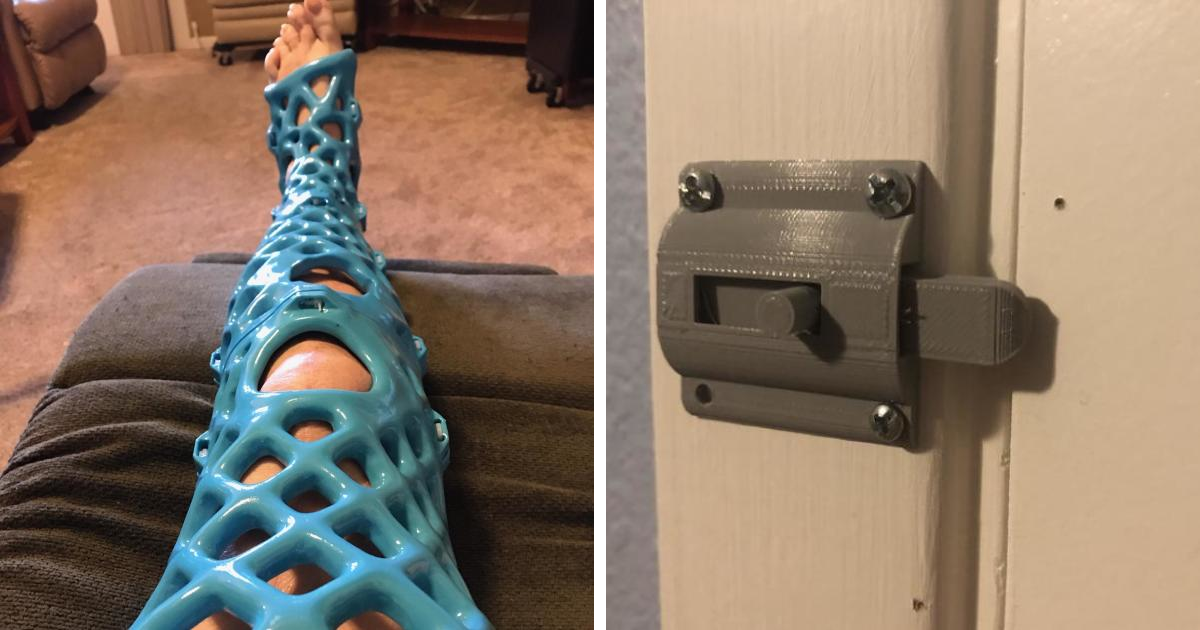 I wash like this and just in basins and in an ultrasonic bath. It's practical. It doesn't matter how dirty the alcohol is in the first container. But how in the first one it becomes dirty enough so that the part is not washed off, then it becomes dirty alcohol, and pour clean alcohol into the first container. And so in a circle. Consumption becomes much less.
I wash like this and just in basins and in an ultrasonic bath. It's practical. It doesn't matter how dirty the alcohol is in the first container. But how in the first one it becomes dirty enough so that the part is not washed off, then it becomes dirty alcohol, and pour clean alcohol into the first container. And so in a circle. Consumption becomes much less.
So I ordered another container from the same seller. From the Russian warehouse came pretty quickly. And most importantly whole.
Now take a bucket of alcohol. I usually wash with ethyl alcohol. It smells nicer, but it's more expensive. Therefore, for washing, I bought isopropyl (~ 150r liter) and poured it into basins.
I know that brackets are printed on the sink from Elegoo to put on the table from the NeElegy printer. It turned out to be a pleasant surprise that the table from Voxelab Proxima fit perfectly.
Looking ahead, over time, I threw out the upper metal bracket and the table goes completely inside and stands on the "ribs" of the container. And you do not need to unscrew the top lamb.
And you do not need to unscrew the top lamb.
And now the most important thing is the work of all this. I printed the details, removed the table, put it in the sink and set it for 10 minutes to wash.
What can I say - the part was washed, there are no particular complaints here. If you take the detail more difficult, and also hollow, then of course the ultrasonic bath will wash much better and faster. But first and foremost is convenience. It is very comfortable. He took off the table, put it in, washed it, got it clean.
And here's another nice bonus - the table was washed. I never washed it. And the same goes for the lamb and the part where the level adjustment screws. Usually I had it all in resin. I gave up on this and in gloves (usually dirty from resin) I just always took it. But since such a thing, then why not shove the entire bracket to wash.
Then he took the table out to dry. And then finished printing the second printer. This time I decided to immediately put everything in the sink in order to wash both the part and the bracket and table in the same way.
This time I decided to immediately put everything in the sink in order to wash both the part and the bracket and table in the same way.
It certainly was a nice bonus. Everything cleaned up great and is like new now.
And then we remove the container, install the turntable, lay out the printed parts on it, switch the mode and turn on the illumination.
Theoretically, the part should be perfectly illuminated from all sides. Since it shines from below with reflected rays. But I break the process into 2 passes, just flipping the parts.
What can I say in the end.
It's very, very convenient. Plus it's very clean. It’s clean everywhere, all around) Of course, I have a “dirty area” covered with a silicone mat, where I separated the parts, wiped the table, threw the parts into basins. Plus, all this must be done with gloves. And as a result, they are once again too lazy to take off and everything that relates to this process gets dirty.


